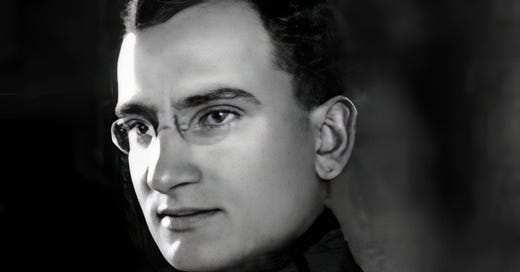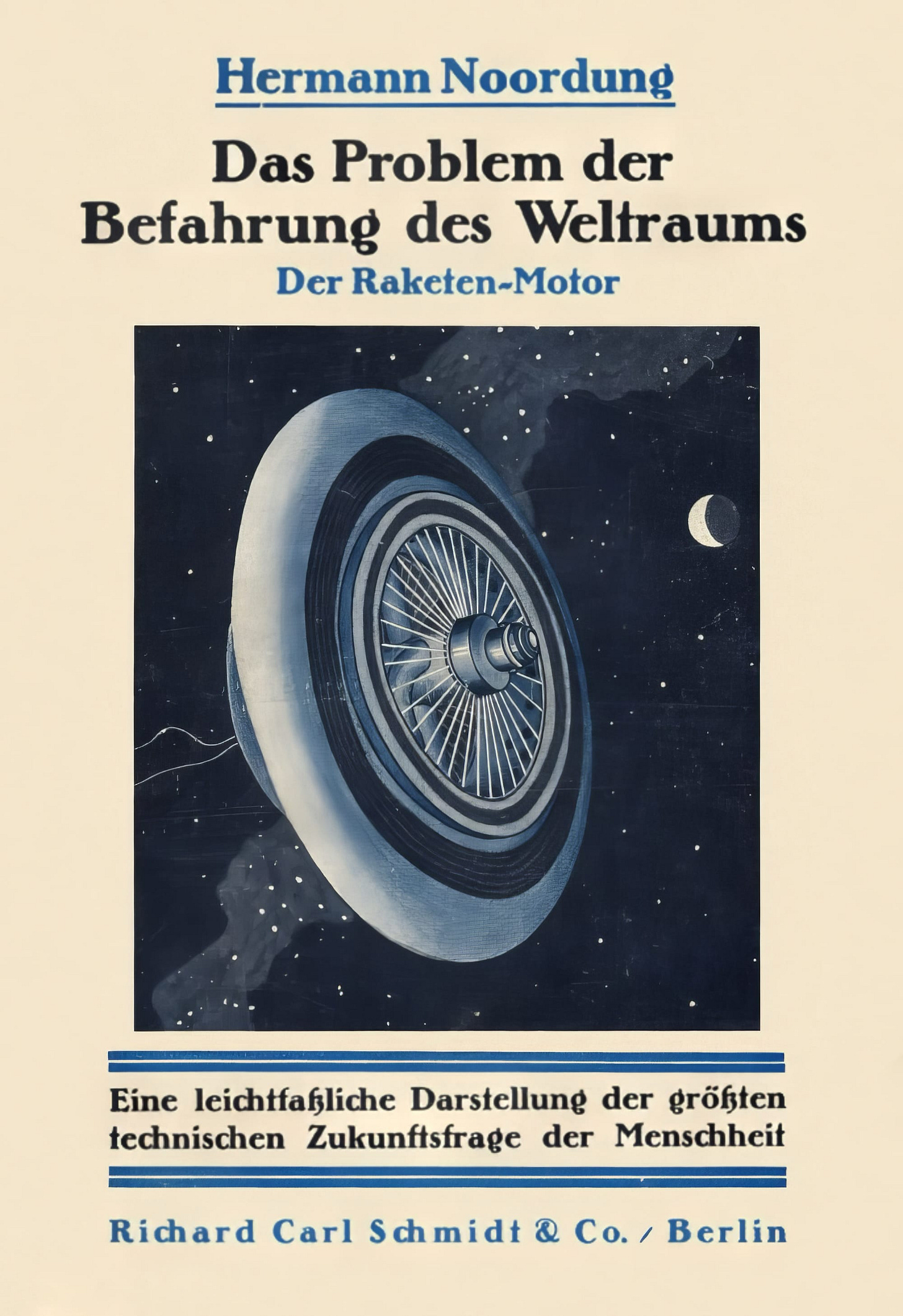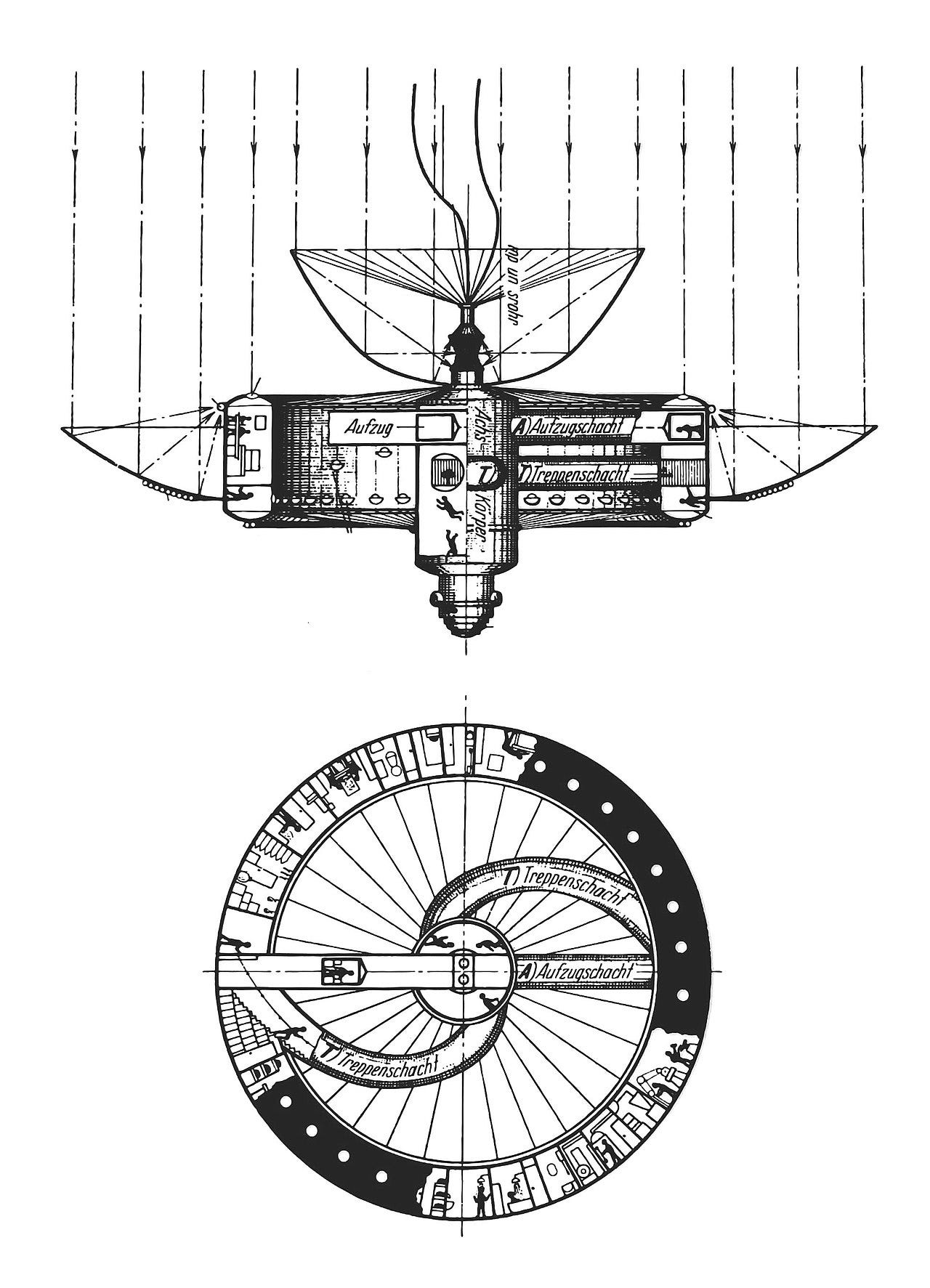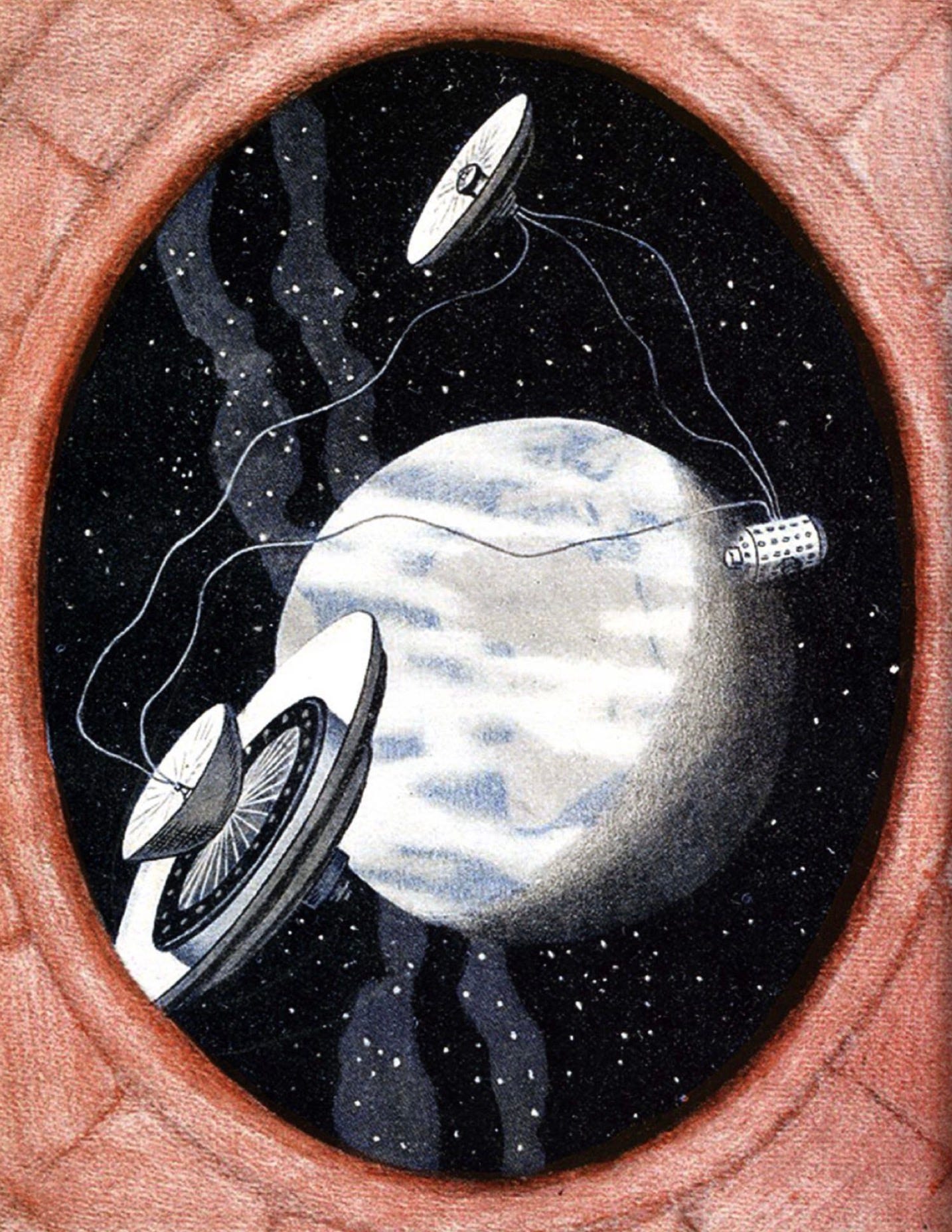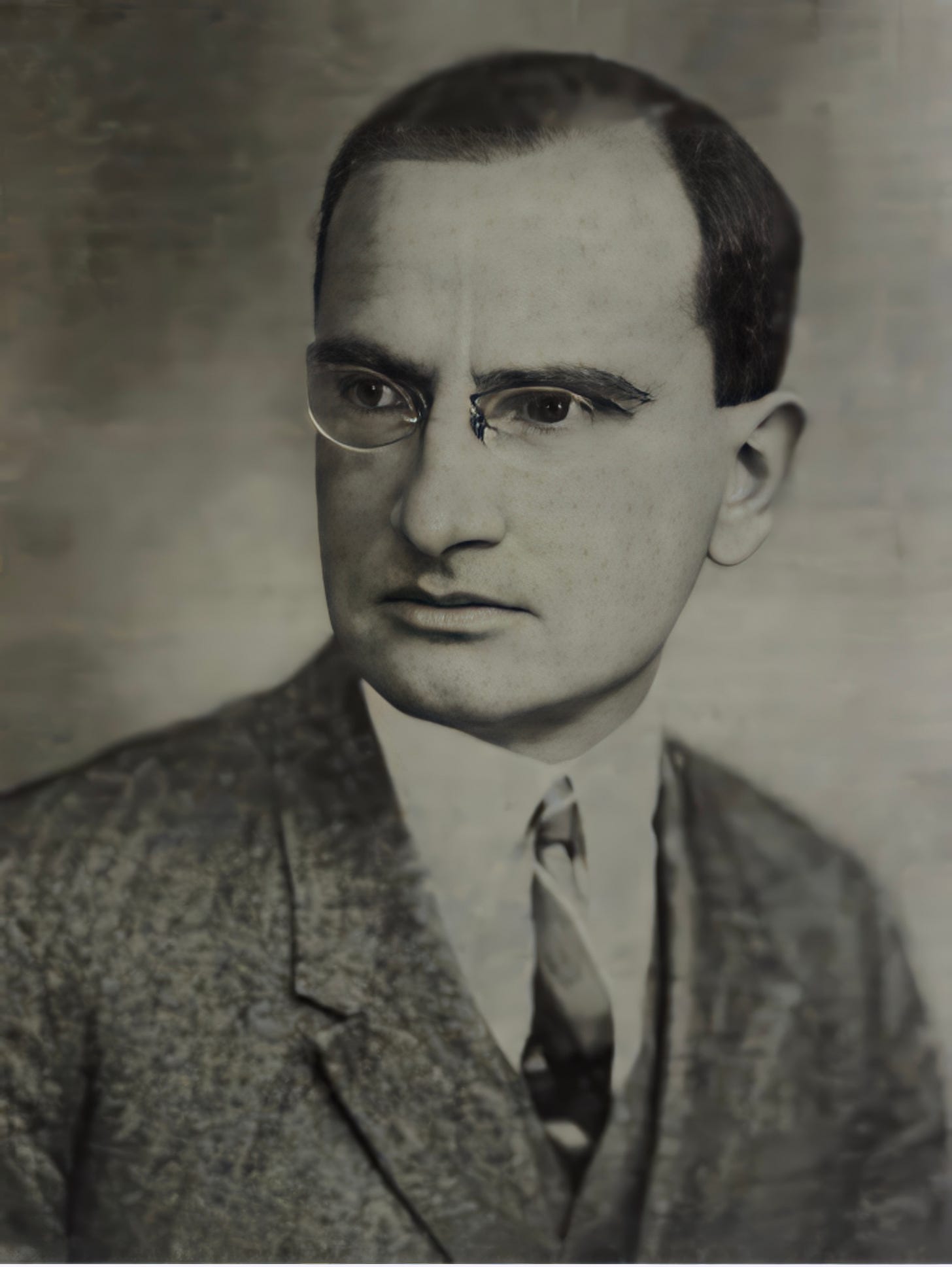Herman Potočnik Noordung
A visionary Slovenian engineer and pioneer in astronautics who transformed humanity’s understanding of space exploration with groundbreaking ideas and inspired generations to dream beyond Earth.
In the early 20th century, when humanity was still grappling with the mysteries of flight and only beginning to understand the complexities of our planet, Herman Potočnik Noordung dared to look beyond Earth’s horizon. A Slovenian engineer and visionary thinker, Noordung imagined a future where humans would inhabit the stars.
Decades before the first human-made satellite orbited the Earth, he proposed groundbreaking ideas that laid the foundation for modern space exploration. Among his most notable concepts was the "Wohnrad," a wheel-shaped space station designed to generate artificial gravity—an idea that would inspire countless engineers, filmmakers, and scientists for generations to come.
What set Noordung apart was not merely his technical ingenuity but his holistic understanding of the human dimension of space travel. He envisioned sustainable living environments in space that addressed both the mechanics of survival and the psychological and physiological well-being of astronauts. His 1928 book, The Problem of Space Travel, stands as a seminal work, brimming with meticulous calculations, groundbreaking designs, and a vision that was as audacious as it was inspiring.
Early Life and Military Career
Herman Potočnik was born on December 22, 1892, in Pula, a vibrant naval hub of the Austro-Hungarian Empire. Raised in a Slovenian family with deep military connections, he inherited a legacy of discipline and service. His father, Jožef Potočnik, served as a naval doctor, while his mother, Marija Kokoschinegg, hailed from a family with Czech roots, reflecting a multicultural heritage. Following his father’s untimely death in 1894, the family relocated to Maribor, where young Herman’s curiosity and intellect began to take shape during his formative years.
Potočnik attended a prestigious military school in Bad Fischau, near Vienna, where his aptitude for engineering began to shine. Guided by his uncle, a major-general in the Austro-Hungarian Army, he secured a place at the esteemed Imperial and Royal Technical Military Academy in Mödling. There, he excelled in railway and bridge construction, culminating in his graduation in 1913 with the rank of engineer second lieutenant, laying the groundwork for his future innovations.
During World War I, Potočnik applied his engineering expertise on the front lines, constructing and maintaining vital infrastructure, such as bridges and railways, for the Austro-Hungarian military. He faced the brutal realities of war in major battles, including the grueling campaigns on the Soča Front. These experiences profoundly affected him, both physically and emotionally, as the harsh conditions and prolonged exposure to disease ultimately led to his diagnosis with tuberculosis. Unable to continue his military service, he retired in 1919 with the rank of captain, marking the end of one chapter and the beginning of his path toward groundbreaking innovation.
Despite facing significant health challenges, Potočnik’s unwavering passion for engineering propelled him forward. After the war, he relocated to Vienna to live with his brother and resumed his studies at the Vienna University of Technology. By 1922, he had successfully earned both an engineering degree and a doctorate in electrical engineering. These academic milestones, combined with his profound wartime experiences, became the foundation for his pioneering contributions to astronautics.
The Seminal Work: The Problem of Space Travel
After earning his doctorate, Potočnik devoted himself wholeheartedly to the possibilities of space travel. His fragile health, which precluded traditional employment, became an unexpected advantage, allowing him to focus exclusively on his passion for astronautics. He delved deeply into the works of contemporary pioneers like Hermann Oberth and Konstantin Tsiolkovsky, absorbing their groundbreaking theories on rocketry and space exploration, which served as a vital foundation for developing his own revolutionary ideas.
By 1925, Potočnik embarked on crafting his vision for humanity’s long-term presence in space. Drawing on his engineering expertise and an extraordinary imagination, he devised innovative solutions to overcome the daunting challenges of living and working in the unforgiving environment of outer space. These efforts culminated in 1928 with the publication of his seminal work, Das Problem der Befahrung des Weltraums – Der Raketen-Motor (The Problem of Space Travel – The Rocket Motor), a book that would profoundly influence the future of astronautics.
Regarded as a cornerstone in the history of astronautics, his book stands as a visionary masterpiece. Written under the pseudonym Hermann Noordung, it outlined a bold and forward-thinking blueprint for space exploration, long before such ideas were feasible. Potočnik seamlessly fused rigorous engineering principles with an imaginative perspective, creating a work that was both technically groundbreaking and profoundly inspirational.
One of the most revolutionary proposals in the book was the "Wohnrad," a wheel-shaped space station ingeniously designed to generate artificial gravity. By rotating at a precise speed, the station would utilize centrifugal force to mimic gravity for its inhabitants. As Potočnik explained, "Artificial gravity created through rotation will allow humans to live and work in space as they do on Earth, maintaining both health and productivity." This groundbreaking design tackled the inherent challenges of weightlessness while also laying the foundation for a sustainable living environment in space.
Potočnik championed the principles of resource management and self-sufficiency as essential pillars for space exploration. "To sustain human life in space, a station must be entirely self-sufficient, with systems to recycle air and water and harness solar energy—a mirror of Earth's natural processes," he wrote. These forward-thinking concepts laid the foundation for modern sustainability practices in space, ensuring that future missions could thrive independently from Earth’s resources while minimizing environmental impact.
Decades ahead of his time, Potočnik envisioned satellites placed in geostationary orbit, remaining fixed relative to a point on Earth to facilitate continuous communication and observation. "Satellites fixed in orbit will serve as platforms for communication and observation, opening a new dimension in connecting humanity," he proposed. This visionary concept laid the groundwork for modern communication and weather satellites, which today are integral to global connectivity and forecasting, underscoring the profound foresight of his ideas.
The Legacy of Visionary Design
Herman Potočnik Noordung’s influence extends well beyond his lifetime, significantly shaping the trajectory of modern space exploration and design. One of his most notable admirers was Wernher von Braun, the visionary architect behind the Apollo moon missions, who recognized Potočnik’s concepts as pivotal. Among these, the idea of rotating space stations to generate artificial gravity stood out, becoming a foundational principle that continues to inform the design of future space habitats and exploration efforts.
The echoes of Noordung’s "Wohnrad" reverberate across popular culture and modern science. Stanley Kubrick’s iconic film 2001: A Space Odyssey prominently features a rotating space station strikingly similar to Potočnik’s design, cementing the cultural significance of his visionary ideas. Even today, cutting-edge space exploration projects, such as NASA’s Gateway lunar outpost, continue to integrate elements inspired by his groundbreaking concepts, highlighting their enduring relevance.
Beyond his engineering innovations, Potočnik also tackled the pressing challenges of human biology in space. He was a pioneer in recognizing the detrimental effects of microgravity on the human body, including muscle atrophy and bone density loss. To combat these issues, he emphasized, "The absence of gravity in space will weaken human muscles and bones unless counteracted by systematic physical exercise and innovative habitat designs." These groundbreaking ideas laid the foundational principles for the emerging field of space medicine, ensuring that human health remains a priority in the exploration of space.
Overlooked in His Lifetime
Despite the groundbreaking nature of his work, Herman Potočnik Noordung garnered little recognition during his lifetime. Choosing to publish under the pseudonym "Hermann Noordung," he sought to distinguish his intellectual contributions from his personal identity—a choice that may have inadvertently contributed to the limited reach of his ideas. Furthermore, the technological constraints of the 1920s made his visionary concepts appear impractical to many of his contemporaries. Combined with the political and economic instability of the interwar period, these factors significantly hindered the broader dissemination and acceptance of his groundbreaking work.
Potočnik’s health posed significant challenges, severely limiting his ability to advocate for his groundbreaking ideas. Stricken with tuberculosis and living modestly in Vienna, he lacked the financial resources and institutional support that could have amplified the reach of his work. Tragically, his untimely death in 1929 at the young age of 36 cut short a life brimming with extraordinary promise and unrealized potential.
It was only in the decades following his death that Herman Potočnik’s contributions began to receive the recognition they rightfully deserved. Rediscovery of his groundbreaking book led to its translation into multiple languages, enabling his visionary concepts to reach a global audience. Today, scholars of astronautics and space exploration widely acknowledge his pivotal role as a pioneer, highlighting his profound influence on both the theoretical and practical advancements in the field. In his homeland of Slovenia, his legacy is celebrated as a symbol of national pride, with institutions such as the Noordung Center in Vitanje committed to preserving and promoting his remarkable work.
Herman Potočnik Noordung was more than an engineer; he was a dreamer and a pioneer who dared to envision humanity’s future beyond the confines of Earth. As he eloquently expressed, "Space is not merely a void to traverse; it is a frontier that challenges the very limits of human ingenuity and perseverance." His ideas, though rooted in the scientific and technological limitations of his time, transcended those boundaries to inspire future generations of scientists, engineers, and space enthusiasts.

